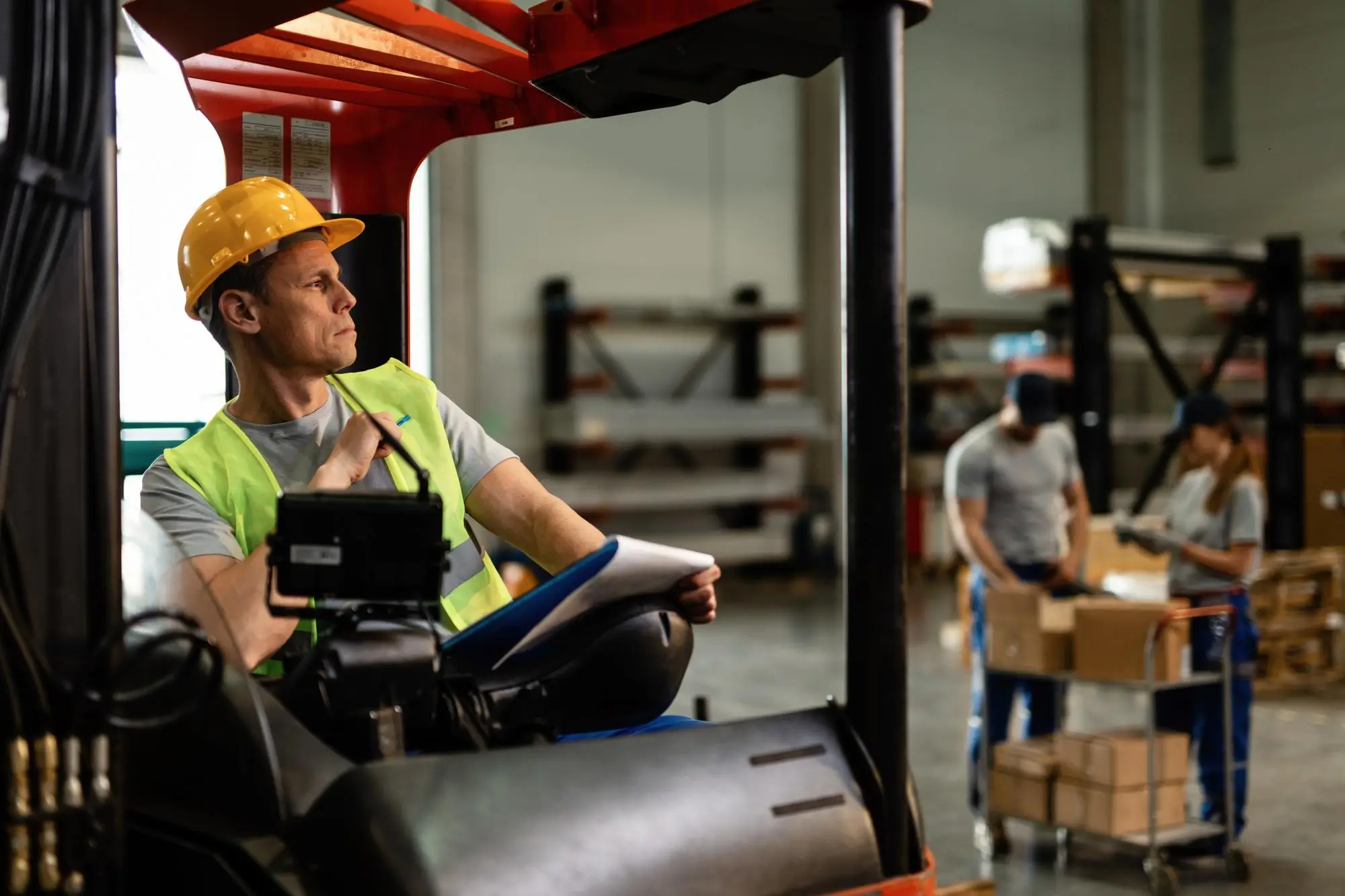Warehouse Safety Statistics To Know In 2025
Warehouses have become the backbone of global supply chains, particularly with the rapid growth of e-commerce and the increasing reliance on fast and efficient order fulfillment. In 2025, the rise of automation, robotics, and AI-driven systems has transformed operations; however, these advancements have not eliminated the risks workers face.
Labor shortages mean employees are often working longer hours under greater pressure, which increases the chances of fatigue-related accidents. Despite improvements in safety technology, warehouses remain high-risk environments, with heavy machinery, forklifts, conveyor belts, and fast-paced activity contributing to hazards on the floor.
From slips and falls to serious forklift-related injuries, the industry continues to see alarming incident rates. These challenges underline why workplace safety is more than just adherence; it’s essential for employee wellbeing, productivity, and long-term business resilience. This blog underlines some of the important statistics regarding the scope of risks warehouses face today and why safety must remain a top priority. Read on!
Key Warehouse Safety Statistics You Must Know About
In order to stay safe while working in huge warehouses which are prone to many hazards, it’s essential for you to learn about the statistics mentioned below:
Warehouse Injuries Remain Above Industry Average
The warehouse sector reports an injury and illness rate of 5.5 cases per 100 employees in 2021, more than double the 2.7 per 100 rate across all industries, per a U.S. Department of Labor audit.
According to the Bureau of Labor Statistics data, warehousing and transportation combined recorded a rate of 4.8 cases per 100 full-time workers in 2022, compared to the overall private industry average of 2.7 per 100, underscoring higher risk.
A 2021 Department of Labor Office of Inspector General report showed warehouse-related injuries nearly doubled, from around 42,500 to over 80,500 cases, while the number of warehouse facilities grew just 14%, reflecting increasing hazards unmatched by safety growth.
Fatalities in Warehousing Increased by 23%
According to RIDDOR data, fatal injuries in the warehouse industry surged 23% in 2021 compared to the prior year, increasing concerns about on-the-job safety.
Business Insider put forward a U.S. Senate HELP Committee report. It stated that Amazon’s warehouse injury rates were nearly double that of non-Amazon warehouses over the past seven years, reflecting a broader trend of elevated risk in high-intensity logistics operations.
Forklifts Cause Nearly 25% of Warehouse Accidents
Globally, forklift-related incidents account for approximately 25% of all warehouse injuries, making forklifts a leading risk factor in warehouse safety.
In the U.S., forklifts cause around 7,500 injuries and nearly 100 fatalities annually, underlining the serious dangers these vehicles pose when safety measures fail.
Studies show forklift overturns alone account for 25% of forklift accidents, and in a broader dataset, 24% of these overturns result in fatalities, suggesting that accidents involving forklifts are not only common but also disproportionately deadly.
Loading Docks Are Identified as High-Risk Zones
25% of all warehouse accidents occur at the loading dock, making it a hotspot for serious incidents.
For every loading dock injury, there are approximately 600 near-misses, highlighting the immense hazard density in these areas.
In 2018 alone, loading docks were linked to nearly 6,600 worker absences due to injury or illness, underscoring how frequent and impactful these mishaps can be.
Struck-By Accidents Are a Leading Cause of Death
In the transport and storage sector (which includes warehousing), struck from falling or moving objects accounted for 10% of non-fatal injuries, ranking among the most common incident types.
Over a longer span (7+ days of absence), the “struck by object” category rises to 12% of such injuries, further showing the severity of these events.
In the UK, fatalities due to contact with moving machinery or being struck by a vehicle make up over half of all recorded workplace deaths, highlighting their lethal potential.
Musculoskeletal Injuries Affect Thousands of Workers Annually
In a study of warehouse workers, 24% reported low back pain, especially those performing separation tasks, reflecting high physical strain.
In the broader transportation and warehousing sector in the UK, 3.3% of workers suffered from musculoskeletal disorders (MSDs), a rate slightly higher than the all-industry average of 3.2%.
On average, across workplaces, the incidence of MSDs due to overexertion or repetitive motions stands at 31.8 new cases per 10,000 full-time workers, with the transportation and warehousing sector trailing among the highest.
Slips, Trips, and Falls Still Account for More Than 27% of Accidents
Slips, trips, and falls account for 27% of all non-fatal warehouse injuries reported to OSHA (U.S. Bureau of Labor Statistics, 2023).
Falls from ladders and elevated platforms cause 20% of all fatal warehouse accidents, making them one of the top killers in the sector (National Safety Council, 2023).
E-commerce Boom Driving Higher Injury Rates
The surge in e-commerce has driven warehouse employment up by over 80% since 2010, creating higher exposure to injuries in high-volume operations.
Injury rates in e-commerce fulfillment centers are more than double those of non-fulfillment warehouses, with 5.9 injuries per 100 workers (U.S. Department of Labor, 2022).
Wrap Up
Warehousing remains one of the most dangerous sectors in today’s economy. From forklift-related accidents and loading dock hazards to musculoskeletal disorders and fall-related injuries, the risks are consistently higher than the all-industry average. The above stats speak volumes about how important it is for workers to be aware of using the right PPE when working in warehouses.
Every incident represents a worker whose health, livelihood, and future may be permanently affected. Employers have both a legal and moral responsibility to invest in OSHA-compliant training, enforce safety procedures, and foster a culture where workplace safety is non-negotiable.
Enroll in OSHA Training →



